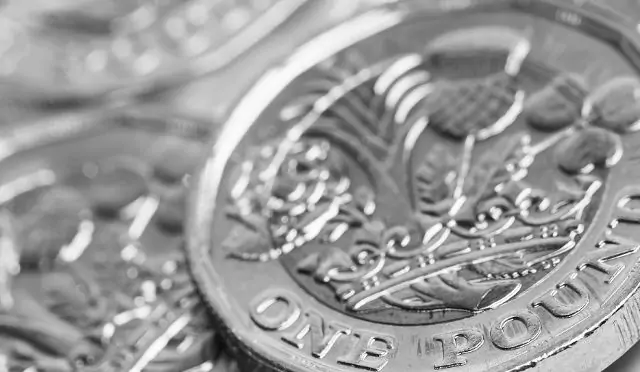With only a few weeks to go until UK Chancellor Rachel Reeves will present the new Labour Government’s first Budget, and tax rises apparently inevitable, many households will be wondering if they can take preventative action.
The UK government has promised not to increase the rates of the big two taxes on income (income tax and National Insurance), as well as VAT and the headline rate of corporation tax, and has also pledged not to ‘raise taxes on working people’.
“That carefully worded promise leaves open quite a range of revenue-raising possibilities that could target wealth in a number of ways,” says Jason Hollands, Managing Director at wealth management firm Evelyn Partners. It’s difficult to “keep calm and carry on doing nothing” when both the Chancellor and the Prime Minister are making speeches warning of “pain” and “difficult choices”, confirming the inevitability of some tax rises at the Budget.”
In such circumstances, anyone who has even a modest amount of wealth stored up is sensibly considering where tax raising measures could land and what they can do to lessen their impact.
“We certainly wouldn’t recommend any drastic action solely on the basis of speculation about what Rachel Reeves might announce but there are some steps that those who would like to protect their assets can take that can be ‘win-win’,” Hollands said. “In some cases, it might be a case of just bringing forward steps that had already been decided on. In others it might be a course of action that is likely to have positive consequences whatever happens, but which will provide shelter against some of the potential tax changes that could arise.”
Not all of the following will apply to everyone or make sense in every individual circumstance – but these are some ideas to consider for people looking to batten down the hatches.
Protect investments from capital gains tax (and savings interest from income tax)
With the British tax burden already high and set to increase – thanks to various frozen allowances and thresholds that are shrinking in real terms – it is vital to make as much use as possible of the various tax allowances available. Hollands says it makes sense individually to consider using ISA and other tax allowances and exemptions to mitigate against unnecessary tax bills.
But if you are married or in a civil partnership, then there are additional possibilities, as there are two sets of allowances to take advantage of – not just the capital gains exemption but also ISAs and the personal savings allowance – that can be used to optimise your family finances.
This is because assets such as cash and investments can be transferred between spouses without triggering a taxable event. These “interspousal transfers” can be particularly useful where one partner is subject to a higher tax band than the other, as well as to make use of two sets of allowances.
Savings allowances
Under personal savings allowance rules, basic rate taxpayers can receive up to £1,000 of interest each year but this drops to £500 for higher rate taxpayers. Those subject to the 45% additional rate of income tax, which kicks in on income above £125,140, get no PSA at all.
Therefore, according to Evelyn Partners, where one spouse is subject to the higher or additional rate of the tax and the other is either a basic rate taxpayer or has no earnings, it makes financial sense for cash savings to be held in the name of the partner subject to the lower tax rate, providing your relationship is strong and you trust each other.
CGT exemptions
Likewise, anyone concerned about the potential for increases in CGT can consider not just using up this tax year’s exemption but also banking profits on investments before a potential CGT hike – if the investment case makes sense, and there is time to complete the transaction. This is because any rise in CGT is likely to take place immediately, if announced on October 30.
Married couples or civil partners can also first consider splitting the assets to be sold between themselves and their spouse. This can firstly, make use of two sets of annual capital gains exemptions (currently £3,000 each) and if the gains made are likely to exceed both of these combined (£6000), then it can also enable the gains crystallised above this are realised by whichever spouse might be subject to a lower rate of CGT.
Currently basic rate taxpayers are subject to 10% CGT on most assets (18% on residential property that is not their main home), while higher and additional rate taxpayers pay 20% CGT (24% on property investments).
Were CGT to be harmonised with income tax rates, this would be a massive jump for those on the highest tax rates. If you own investments such as shares and funds that are not currently in tax-efficient wrappers (ISAs or pensions), it would be very prudent to use your CGT exemptions before the Budget and either use the proceeds to contribute to ISAs or pensions, or you can always reinvest the money again which will reset the point at which gains will be calculated in the future for tax purposes.
One thing to be aware of, is that if you intend to reinvest in the same shares or funds that you have just banked gains on, you must wait for a period of at least 30 days before doing so.
Bed and ISA
As mentioned above, if you have shares or funds loitering in a taxable environment, it is vital to migrate these into ISAs (or pensions) so that future returns are protected from taxation if you have not used your allowances already. This process is known as “Bed and ISA” (or “Bed and Pensions”) and involves selling the investment – ideally trying to mitigate a CGT bill by making use of your £3k annual exemption, or transferring the investments to a spouse on a lower tax band before selling them (see above) – and then repurchasing them within an ISA.
This might involve some small transaction costs, such as share dealing fees and stamp duty on share purchases, but this should be more than outweighed by the long-term tax benefits.
The process can take a few days, especially if you first need to transfer the investment to a spouse or move them on to the nominee account of a different broker or platform from where they are currently held, so it is wise to get a move on and not leave this until a couple of days before the Budget.
Use your ISA allowance – or lose it.
The valuable £20,000 annual ISA allowance means you can protect your cash savings and investment returns from tax, while offering significant flexibility in how and when you can access them – unlike a pension.
With the tax environment becoming ever more hostile, people should make as much use of these as possible. Many people leave opening an ISA to the final months of the tax year, but if you have the cash available to bring this forward to before the Budget, it really does make sense to do so early this year.
You can make withdrawal from an ISA at any point, so there really is no reason not to open your ISA early.
Boost pension saving
If an overhaul of pension tax relief is on the Chancellor’s radar it won’t be the first time the Treasury has looked at this long-standing benefit to savers in order to save money. Speculation that there could be cuts to the higher and additional rates and a move to a flat rate of relief has been a feature of previous Budgets and for years the current system has looked like it has been drinking in the last chance saloon. This time around the threat appears more serious, although a 30% flat rate of tax relief is probably more likely than the nuclear option of levelling down everyone to the basic rate of 20%.
Either step would weaken the tax benefits of pension saving for high earners, which might fit with the government’s warning that the financial burden should be borne by “those with the broadest shoulders”.
So those higher and additional rate taxpayers who have been considering injecting a lump sum into their pension pot – possibly using ‘carry forward’ to boost the amount they can put in – can consider bringing forward such a step.
More generally, many higher earners might consider ramping up their pension contributions, as pension saving can afford some protection against the growing tax burden inflicted by frozen income tax thresholds. Even if pension tax relief survives unscathed in this Budget it might be best to “grab it while you can” – and as research suggests many workers are not saving enough to fund a decent retirement, then this could be a good time to raise monthly contributions.
This might especially apply to those who are fast approaching retirement, e.g. in their fifties, but who fear their pension pot is not going to provide a desirable income. This might include those who started their own businesses and were not able to contribute in the past – e.g. during tough times such as the pandemic – or who were struggling with bringing up families and paying big mortgages, but can now play catch-up.
Once the current year’s pension allowance has been used up (a potential gross contribution of up to £60k), it is also possible to mop any unused annual allowances from the three previous years (starting with the furthest out) under “carry forward” rules. Use of carry forward means someone has the potential to make a very large pension contribution ahead of any possible changes to pension tax reliefs.
It is wise to seek out some professional advice to work out how much you could contribute and still benefit from the tax reliefs, as this will depend on your earnings. For example, the very highest earnings are subject to a complex calculation on their pension allowances, which are tapered down from the maximum allowance dependent on their total earnings across all sources of income.
The pension tax-free lump sum?
Savers prepared to take the step of crystallising their pension pot can currently access 25% of the funds tax-free – up to a cap of £268,275 for those who haven’t taken out fixed protection. This option also does not preclude further pension saving as long as certain rules are observed.
Hollands at Evelyn Partners says: “We wouldn’t recommend hasty steps like accessing pension funds on the basis of speculation about what might be in the Budget. But if you were planning to do this shortly anyway, and have a clear intended use for it – such as mortgage reduction, paying off other debts or helping out family with expenses like school fees or university costs – then bringing the action forwards might not be the worst idea.”
What isn’t desirable is taking the 25% tax free cash in a bit of a panic and then holding it in a cash savings account where it will be liable to tax, rather than continuing to accumulate tax efficiently within a pension. That would be an unwise move and one that could cause instant regret if no changes to tax-free cash rules were announced in the Budget.





